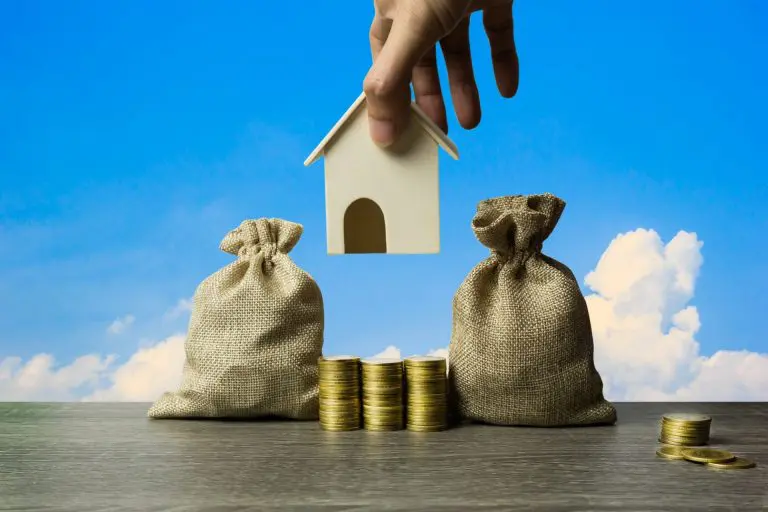When it comes to property investment, the tax benefits are seemingly endless! This is because the Australian government wants to reward people who invest in real estate, and it makes property investment more accessible for Australians from all financial backgrounds.
What’s your investment strategy?
Are you looking for immediate cashflow? Or do you want to take advantage of capital growth and the tax benefits that come with negative gearing? We hear the term negative gearing a lot in the real estate and investment world, but what exactly is it and how can it impact your investment?
The term ‘gearing’ refers to borrowing money to buy an asset. In property circles, it means taking out a home loan to buy real estate. When a property is negatively geared it means that the rental return is less than your loan and interest repayments, as well as all your other outgoing costs of holding the property including depreciation. After last year’s election, negative gearing is here to stay.
But gearing is not always negative!
There are actually 2 other ways a property can be geared.
Firstly, Neutral Gearing: This type of property gearing occurs when both income and investment expenses are equal and there is no overlap of one or the other.
And secondly, Positive Gearing: As you might expect, this strategy is the opposite of negative gearing. When your investment property is positively geared, your rental return is higher than your repayments and other costs, resulting in immediate cash flow.
Negative gearing means you’re making a loss.
If the point of an investment property is to generate wealth, then how can losing money with negative gearing be a good strategy? Well, it can help you financially in several ways, but it’s really for those who are ready to play the long game. Let’s take a look at how negative gearing works, some potential benefits and risks, and how to decide whether this strategy is right for you.
Let’s take a look at how negative gearing works, some potential benefits and risks, and how to decide whether this strategy is right for you.

Capital growth
Capital growth is the increase in value of your property over time and can be achieved in two main ways. Firstly, you can improve the value of the property by investing in renovations or upgrades, which is known as capital improvement. Secondly, capital growth happens naturally as the value of your property increases over time.
By carefully considering the growth prospects of property locations you can maximise the capital growth potential of your portfolio over time. With the right property and a good negative gearing strategy you can minimise tax whilst maximising capital appreciation.
Increase rent over time
A key part of the property investment game is to gradually increase the rent over time. Small, regular increases in rent will ensure that you stay ahead of inflation. An annual increase of 3-5% is generally not enough to upset your tenants as long as they are treated with respect and you deliver a prompt response to maintenance requests.
With today’s property prices positive gearing isn’t always possible right away. Generally speaking, property investors will start out negative gearing with a plan to switch to positive gearing down the track. As you increase the rent over time, an investment property can turn positively geared, especially if you are paying the down the principal and interest on your mortgage.
Minimise your tax
Other investors are committed to negative gearing as a long-term strategy because they want to minimise their tax liability to increase their after-tax income. Through negative gearing, the ATO allows property investors to write off their property investment expenses against tax, which lowers their taxable income.
This will either entirely or partially offset any shortfall between rental income and holding costs, making property investment more affordable, with greater potential for long-term growth. There are tax deductions for your mortgage interest, operating expenses, insurance, depreciation, and so much more, which makes negative gearing a great strategy for tax confident property investors.
Speaking of depreciation, we call this a ‘soft dollar’ cost because it relates to existing assets (like the building) which doesn’t affect your cashflow. Its important to understand that your property loss isn’t necessarily your out of pocket cash loss! That’s why we love depreciation..
With negatively geared properties, investors reduce tax because their total taxable income is offset and reduced by their property loss. Yes, negative gearing legally reduces the amount of tax you have to pay.
Is negative gearing right for you?
In the lead-up to the federal election that was held on 18 May, 2019, negative gearing was been called both a valuable cornerstone for middle class ‘mum and dad’ investors, as well as an unnecessary tax break that has made housing unaffordable for many Australians. However you see it, the election has come and gone, and negative gearing is here to stay.
Although negative gearing is not for everyone so we let’s talk about a few risks. Negatively geared properties can eat into your cash flow, which is only made worse if your tenants move out and you struggle to attract new ones. You may be forced to sell the property before seeing significant capital growth, especially if expenses go up and you can’t offset the extra expense through a rent increase alone.
For these reasons, only investors who have enough cash flow to cover their losses and buffer bad times should be encouraged to use a negative gearing strategy. It can also take many years before capital growth pays off, and no one wants to sell property for less than what it cost in the meantime.
Negative gearing can also limit the number of investment properties you can buy as banks and mortgage lenders may consider you to have reduced loan serviceably or borrowing power.
Become tax confident to succeed with negative gearing.
In short, positive gearing refers to making a profit (cashflow wise) out of your investment property, while negative gearing means you’re making a loss and are eligible for some tax concessions. A good property tax specialist will help you decide whether negative gearing is the right option for you.
Property investors can use negative gearing to try and turn their investment losses into a positive, by offsetting these losses against their taxable income over a financial year in order to pay less tax. With TaxTank’s interactive reports and real-time data, your tax savings have the potential to exceed your negative gearing losses. Sign up for a 14-day free trial to find out how!





